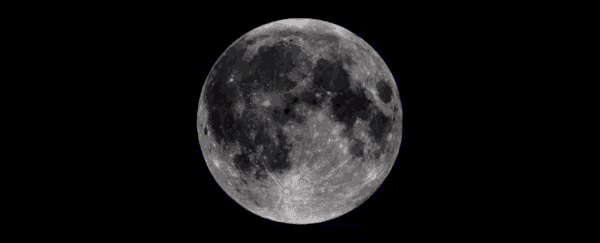The Moon may be Earth's closest cosmic neighbour - and the only extraterrestrial body humans have ever set foot on - but there's a lot about it we don't understand. And one of the biggest mysteries is why its two sides are so significantly different.
Researchers have proposed a possible new explanation, backed by experimental evidence. The Moon's asymmetry, a recent paper lays out, could be down to an asymmetrical distribution of radioactive elements.
The Moon is tidally locked, which means one side - the near side - is always facing Earth. When you look up at it, you can see it's covered in dark splotches: the lunar maria, wide plains of dark basalt from ancient volcanic activity inside the Moon.
The far side, facing away from Earth, is a different story. The crust, for a start, is thicker, with a different composition from the near side. The surface is also far paler, with fewer basalt splotches, and covered in craters.
This is interpreted to mean that the basalt flows on the near side covered up a large number of the Moon's craters, but why the near side had more volcanic activity than the far side has been a pretty huge mystery that lunar scientists have been keen to solve.
And there is something else peculiar about the near side of the Moon, a geochemically weird region called the Procellarum KREEP Terrane.
It's unusually rich in specific elements, which gives it its name - K (the atomic symbol for potassium), REE (rare-earth elements) and P (the atomic symbol for phosphorus). It also contains elements such as uranium and thorium, the radioactive decay of which generates heat.
 Thorium concentrations corresponding with KREEP. (NASA)
Thorium concentrations corresponding with KREEP. (NASA)
This Procellarum KREEP Terrane seems to be associated with basalt plains, and it's been previously demonstrated that its heat-generating properties could have something to do with the near side's prominent volcanism.
In fact, thermal modelling of the lunar interior suggests that the radioactive decay of potassium, thorium and uranium could have provided a near-side heat source for billions of years.
So an international team of scientists set out to discover if this could be the case, conducting experimental analyses to gauge the effect of KREEP on lunar rock.
The mixed a synthetic KREEP composition with lunar rock analogues at concentrations of 5, 10, 15, 25, and 50 percent KREEP. These were then kept at temperatures ranging between 1,175 and 1,300 degrees Celsius for between four and eight days.
The effect was dramatic. The presence of synthetic KREEP in the mixture lowered the melting point of the analogue, producing between two and 13 times more melt than in the control experiments without KREEP. And this is without the contribution of radioactive heat.
To see what happens when this radioactive heat is added to the mix, the team conducted numerical modelling. And they found radioactive heating compounds the effect of the KREEP. Together, the two could have contributed to the volcanic activity on the Moon's near side, resulting in the dark regions we see today.
As for where the KREEP came from? Well, we still don't know the exact mechanism, but it's probably a consequence of how the Moon formed. We think that happened around 4.5 billion years ago, when a body the size of Mars called Theia slammed into Earth, sending debris flying into space. That debris recombined into the Moon, but not homogeneously.
Gaining a greater understanding of how the Procellarum KREEP Terrane formed and affected the interior processes on the Moon can help us better understand how it got there.
"Because of the relative lack of erosion processes, the Moon's surface records geological events from the Solar System's early history," explained planetary scientist Matthieu Laneuville of the Earth Life Science Institute in Japan.
"In particular, regions on the Moon's near side have concentrations of radioactive elements like uranium and thorium unlike anywhere else on the Moon. Understanding the origin of these local uranium and thorium enrichments can help explain the early stages of the Moon's formation and, as a consequence, conditions on the early Earth."
The research has been published in Nature Geoscience.
